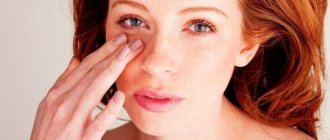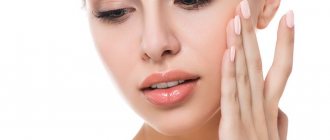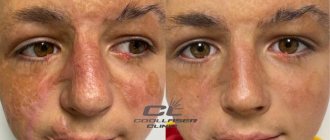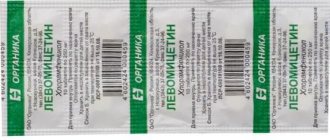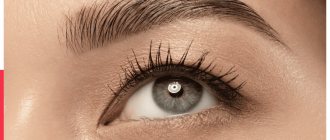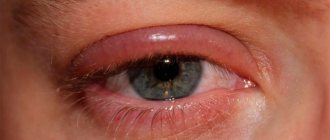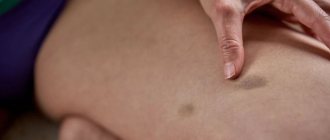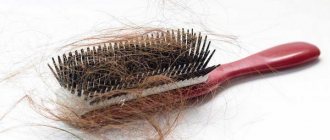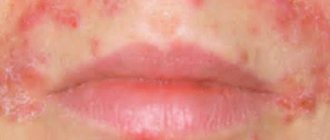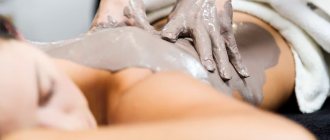Dermatovenereologist (cosmetologist)
Shukhman
Elizaveta Izrailevna
23 years of experience
Cosmetologist, member of the World Association of Interdisciplinary Anti-Aging Medicine (WOSIAM)
Make an appointment
Cellulite (lipodystrophy) is a persistent change in subcutaneous fat. Cellulite zones are characterized by the presence of clearly visible bumps and depressions. Skin relief defects progress with age. Patients complain of redness of the skin with slight stress. During the summer months, an uneven tan develops and areas of depigmentation appear. Lipodystrophy is localized on the forearms, thighs and buttocks.
Statistical data
Signs of lipodystrophy are detected in 75% of girls aged 20-35 years. After reaching the age of 40, cellulite lesions appear in 95% of women. The affected areas are the buttocks, thighs, abdomen, knees and arms.
The accumulation of fluid in the inner layers of the skin provokes the formation of “orange peel”, which affects 95% of women who are faced with lipodystrophy and neglected prevention.
Men rarely suffer from cellulite (less than 10% over the age of 40) due to the presence of a significant amount of collagen in the body, a developed muscular system and the relatively large thickness of the skin.
Cellulite (inflammation of the subcutaneous tissue)
Signs
Cellulite can develop anywhere on the body.
In children it mainly develops around the anus and on the face, and in adults - on the legs, arms and face. The area of skin affected by bacteria becomes red, swollen, swollen, hot to the touch, and painful when touched. Sometimes blisters appear on the surface of the skin and a clear yellowish fluid (lymph) or pus is released. As the infection spreads, there may be a severe increase in temperature, accompanied by chills. It is also possible that the lymph nodes closest to the site of injury may become enlarged.
Description
Cellulite develops when bacteria gets under the skin. Most often, this disease is caused by staphylococci (especially Staphylococcus aureus) and streptococci. This may happen as a result of:
- injuries;
- surgical intervention;
- chronic skin diseases in which its integrity is compromised (such as psoriasis or eczema);
- a dog bite or cat scratch;
- infectious bone diseases.
Most often, inflammation of the subcutaneous tissue develops in those suffering from:
- diabetes mellitus;
- skin diseases (psoriasis, eczema);
- infectious diseases affecting the skin (chicken pox, fungal diseases);
- circulatory disorders (varicose veins).
Also at risk for developing this disease are the elderly, people with weakened immune systems and drug addicts.
However, the cause of cellulite development is not always infection. Inflammation can also be autoimmune.
Cellulitis is not contagious because the inflammation is localized under the skin and the skin provides isolation for the infection.
Diagnostics
The diagnosis of cellulite is made based on the clinical picture and the results of a general blood test. It is imperative to do a culture of the discharge and an analysis of the sensitivity of pathogenic microflora to antibiotics.
Treatment
Cellulite treatment usually takes place at home, but sometimes hospitalization is required. This disease is treated with antibiotics administered intravenously. If the inflammation is autoimmune, then antibiotics are not required.
Anti-inflammatory drugs are also prescribed. Corticosteroid drugs are often used to relieve inflammation.
Treatment should be started immediately after the doctor prescribes it, and be sure to fully follow the doctor’s instructions. The patient should not stop treatment as soon as he feels better. Otherwise, the disease can spread throughout the body, causing blood poisoning. And this can lead to death. In addition, inflammation of the subcutaneous tissue can develop into meningitis. This disease can cause thrombophlebitis.
In some cases, surgery is required.
Prevention
To prevent cellulite, you need to monitor the condition of your skin - it should always be clean, and you should not allow the skin to peel or crack. However, you should also not get carried away with antibacterial body products, as this can lead to disruption of the natural microflora of the skin and a weakening of its resistance to infections.
Care must be taken when handling raw fish, poultry or meat.
When working with soil, it is recommended to wear rubber gloves.
To prevent cellulite, fungal infections must be treated promptly. Wounds on the skin must be washed thoroughly to prevent infection from getting under the skin.
At the first symptoms of inflammation, you should immediately consult a doctor.
© Dr. Peter
Reasons for development
Lipodystrophy develops under the influence of several factors:
- burdened heredity;
- unbalanced diet;
- pathologies of the endocrine glands;
- sedentary lifestyle;
- high emotional and intellectual stress.
Cellulite areas on the thighs and buttocks remain the result of problems with venous blood flow. Excess fat deposits become a risk factor. Lipodystrophy on the abdomen may indicate gastrointestinal pathologies, unstable functioning of the lymph nodes, stressful or depressive conditions. Signs of cellulite in the neck area often develop due to muscle spasms or arthritis.
Stages of cellulite
There are several options for grading the stages of cellulite. Let's look at the main ones.
The first is based on the pinch test, when a certain area of the body is squeezed with your fingers. Depending on the result obtained, the following are distinguished:
- Stage zero, when no tissue changes are noted;
- First: dimples and small irregularities are visible, but in a calm state they are not noticeable;
- Second: tubercles and pits are present during compression, as well as when a person is standing, but they are not present in a lying position;
- Third: cellulite nodules are visible in any condition and position.
The second classification of types of lipodystrophy is based on the reasons for its formation:
- Adipose type. Associated with subcutaneous deposition of excess fat, usually in the thighs and abdomen. Palpation does not cause pain, the tissues are soft;
- Edema type. It is clearly visible when the skin is squeezed; the distinctive symptom is heaviness in the legs, but does not cause discomfort when pressed;
- Fibrous type, when connective tissue grows, nodes are formed that are painful when squeezed. This type of cellulite is difficult to correct; it requires multi-stage treatment and a complex of therapeutic and cosmetic measures to eliminate it.
Stages of lipodystrophy
The types of cellulite and the stages of its development are determined by doctors based on the intensity of destruction of subcutaneous fat.
| Stage of lipodystrophy | Description |
| First | Microscopic swelling appears on the skin. The relief remains smooth. Regeneration in the cellulite area is disrupted - cuts heal slowly, and hematomas persist for a long time. Decay products accumulate in the intercellular fluid |
| Second | The skin becomes lumpy. The lymphatic system is not able to ensure the outflow of fluid from the subcutaneous fat. Foci of compacted fat deposits form |
| Third | Visual changes are clearly visible. An “orange peel” effect appears. Tissue swelling leads to compression of the arteries, impairing blood circulation. Extensive hematomas form. Connective tissue grows around fatty deposits - micronodules appear (a nodule is a spherical constriction) |
| Fourth | The skin in the affected areas remains lumpy when the muscles relax. Micronodules merge into macronodules. The skin takes on a bluish tint. Palpation of the affected areas causes pain |
Definition of cellulite
Cellulite accompanies women of all times. 98% of women have cellulite. Many women do not accept it and try to hide areas of the body covered with orange peel.
Orange peel-like changes in the skin are called liposclerosis, fibrosclerotic edema, or female lipodystrophy. The word "cellulite" was first used in 1920. At that time it was believed that skin inflammation was the cause of the formation of fat folds. But this was wrong and it is now known that cellulite is not accompanied by inflammation.
Cellulite is a degeneration of the skin. Marketers decided to make a “disease” out of cellulite in order to force women and girls to buy special cosmetics and cosmetic procedures.
Both medicine and cosmetology can treat cellulite. But there is no doubt that advanced cellulite becomes a serious problem due to the fact that it leads to stagnation of fat or venous clots - blood clots.
Fighting methods
Treatment of cellulite begins with an analysis of the location of foci of destruction on the patient’s skin. This procedure is mandatory - different parts of the body react differently to hardware or manual procedures. Eliminating lipodystrophy is a complex task based on restoring blood and lymph circulation. Patients are prescribed physical exercises, massage, wraps, and electrical stimulation.
Procedures prescribed by a doctor allow you to solve several problems simultaneously:
- break down fats;
- prevent the formation of new fat deposits;
- ensure the outflow of fluids from tissues;
- increase the tone of subcutaneous vessels;
- perform muscle stimulation;
- even out skin texture.
Their solution is facilitated by hardware procedures: pressotherapy, microcurrent electrical stimulation, electrolipolysis. The listed manipulations ensure restoration of blood flow and increase the intensity of lymph movement. Thanks to this, the normal state of the patients’ subcutaneous tissue is restored, and the relief of the skin is normalized.
Liposuction remains a radical method of treating lipodystrophy. Surgical manipulation is prescribed for patients with a genetic predisposition to the accumulation of subcutaneous fat on the thighs or abdomen. Before the operation, biomaterial will be submitted for laboratory tests. Doctors often refer patients for x-rays or computed tomography. Visualization of the focus of lipodystrophy allows you to plan the course of surgical intervention.
Methods for preventing and eliminating cellulite
Since this problem arises due to a whole range of different reasons, the methods for solving it should be multidirectional and include:
- diet;
- physical exercise;
- cosmetic procedures.
You need to start by making an appointment with a body cosmetologist, who will conduct an examination, collect anamnesis, and prescribe a course of treatment, taking into account the stage of cellulite and the characteristics of your health condition.
The main methods for getting rid of “orange peel” are:
- Massage (manual and hardware);
- Wraps;
- Fitness;
- Proper nutrition.
Let's pay more detailed attention to each point.
Massage for cellulite
Let's start with a massage. This is an effective way to eliminate fat deposits, restore skin firmness and elasticity, and shape your figure.
There are many massage techniques. Within the framework of our topic, first of all, it is worth mentioning anti-cellulite manual massage. It is usually intended to smooth and tone the skin on the legs. The technique for performing this massage is as follows: the massage therapist’s hand movements should be fast and include 50% rubbing and 50% squeezing. The impact is superficial. A course of at least 10 sessions is recommended.
Hardware methods for treating cellulite
Hardware methods - LPG and Endosphere - have also proven themselves well.
LPG is a vacuum-roller effect on body tissue. The technique was developed in France in the 80s of the 20th century. With the help of self-propelled rollers located in the handpiece, the skin fold is mechanically kneaded, which is captured by the vacuum. The whole body is massaged: the specialist moves the handpiece horizontally and vertically, and the rollers rotate in one direction or the other. The most problematic areas of the body (hips, butt and others) are treated with special attention.
Result of LPG massage:
- Removing excess fluid;
- Stimulation of lipolysis;
- Activation of blood circulation and lymph flow;
- Production of collagen in tissues.
All this leads to the fact that the skin is evened out, excess volumes and kilograms are lost, the silhouette becomes more toned. This type of massage requires a special elastic suit that protects the surface of the skin, making the procedure comfortable, and ensures hygiene. The standard course is 10 sessions, the duration of 1 session is 35 minutes in accordance with the protocol of the device manufacturer.
Endosphere therapy was developed by Italian scientists in the early 2000s. This is a method of compression microvibration transmitted to the body using a special device - a cylinder equipped with rotating spheres made of special silicone. The vibration of the spheres causes the deep layer of tissue to “work”, stimulating the work of mechanoreceptors (Merkel particles), thereby activating the process of lipolysis (fat breakdown) and the breakdown of fibrous compounds.
When carrying out the procedure, the cosmetologist changes the speed of movement of the handpiece and thereby sets the parameters of vibration of the spheres and their rotation, providing pressure on the body (“pump effect”). In this case, the specialist varies the intensity of the impact depending on the individual tasks of the patient.
Endosphere therapy is done directly on the skin, onto which massage oil is applied for better gliding of the spheres. Even if cellulite is only on the thighs, the procedure involves not only one or another leg, but also the body as a whole - otherwise the procedure will be ineffective.
This is a course technique, on average 6 to 12 sessions are required, each of which lasts 1 hour 15 minutes in accordance with the recommendations of the creators of the technology.
Endosphere Effect:
- Lymphatic drainage effect;
- Smoothing the skin surface (eliminating cellulite);
- Elimination of local fat deposits;
- Figure correction;
- Weight reduction.
By removing excess water, puffiness is relieved, the skin becomes dense and elastic, more toned.
These devices are recognized leaders in the field of body care.
Many people are interested in:
- Which one is better?
- How is LPG different from Endosphere?
In answering these questions, we must first say that these are two fundamentally different techniques of influence, as can be seen from their description. Secondly, which of these devices will be effective can only be decided by a cosmetologist after examining the patient, taking into account the medical history and the stage of cellulite. Third, a combination of these two methods may be required to achieve the desired effect.
As mentioned above, getting rid of cellulite requires an integrated approach. Therefore, it will be useful to combine massage with wraps, which have a beneficial effect on the quality of the skin. They can be of various types: based on oligo-elements (algae, for example), mud, cream. The temperature regime used is also different - there are hot wraps and cold ones.
At home, such procedures can be carried out only after consultation with a specialist: if cosmetics are used incorrectly, the timing of the procedure and other requirements are not followed, the disease can be aggravated.
How does cellulite wrap work?
A special composition is applied to the skin, then the body is wrapped in a thermal blanket, the desired temperature is set and after the allotted time the procedure ends. The temperature chosen by the cosmetologist should activate the effect of cosmetic products, due to which lymphatic drainage occurs, the functioning of blood vessels is normalized, the skin is nourished and becomes smoother.
Prognosis and prevention
The diagnosis of cellulite assumes that treatment will begin at the first stage - before the formation of deposits under the skin. In this case, it is enough to eliminate the cause of cellulite, which provokes instability of fat metabolism. The prognosis remains favorable. At the same time, patients are treated for underlying pathologies (endocrine disorders) and get used to a balanced diet.
The range of procedures for advanced cellulite changes: the reason for this is significant changes in the subcutaneous fat tissue. Patients are shown lymphatic drainage procedures, ultrasound therapy and deep massage. If the above methods are ineffective, the doctor may refer the patient for liposuction. Removing fat deposits from affected areas is a standard surgical procedure. The prognosis remains favorable, the rehabilitation period does not exceed 2 weeks.
Prevention of cellulite requires careful body care. Doctors recommend that patients use anti-cellulite medications, lead an active lifestyle, and give up bad habits. Systematic visits to a bathhouse or sauna can improve blood flow and lymphatic drainage. Massage sessions have a similar effect on subcutaneous fat.
What is cellulite and why does it appear in women?
Cellulite is often confused with ordinary obesity, resulting in incorrect treatment. Even after losing excess weight, in this case, unpleasant fat pads remain in critical areas on the sides, hips and legs.
In addition to the unpleasant appearance of the skin and the female figure, cellulite can cause a number of disorders, which manifest themselves in the form of pain and heaviness in the limbs and back. Fragility of blood vessels and the skin's predisposition to bruising can also be caused by cellulite. At every age, cellulite can have its own characteristics. Therefore, its treatment in adolescence, adulthood and old age has its own characteristics.
Causes of cellulite in women
Doctors cite a combination of factors as the reasons for the appearance of this unpleasant disease, which are united by an imbalance between the volume of fluid in the interstitial space and the volume of blood circulating in the vessels of the soft tissues.
The cause of the failure leading to cellulite is:
- Unbalanced diet.
- Pregnancy.
- Physical inactivity.
- Hormonal disbalance.
- Tight clothing that interferes with normal blood flow in the tissues, and constant wearing of high-heeled shoes.
All these factors lead to the formation of edema in the soft tissues, leading to the degradation of adipose tissue and its accumulation in certain areas of the female body.
If poor nutrition, sedentary lifestyle and tight clothing can be quickly eliminated as a factor contributing to the appearance of cellulite, then hormonal imbalance in the female body requires long-term treatment. Doctors have long been studying the role of hormones in the appearance of cellulite. It is believed that the main hormone that promotes unwanted fat deposits is estrogen. It is generally accepted that cellulite develops especially intensively after childbirth, when a woman’s body produces female hormones in large quantities.
The accumulation of estrogen during pregnancy is associated with the physiological need to relax a woman’s muscles. This allows the volume of the abdomen and uterus to increase as the fetus develops. Estrogens also help relax the walls of blood vessels, which increases the flow of fluid into the interstitial spaces and leads to its accumulation in the cells of the female body.
The same mechanism of action of estrogens is observed during menstruation. Many women feel heaviness in the limbs and throughout the body caused by the accumulation of fluid in the soft tissues.
The role of water metabolism in tissues during the formation and development of cellulite
The human body is 60% water. Of this volume, 40% of the fluid is contained in the cells in the form of intracellular fluid. 20% of this volume is extracellular fluid, most of which is free in the intercellular or interstitial spaces. Of the 20% extracellular fluid, 5% is in blood vessels. These percentages make up the liquid part of the blood, which is also called plasma.
During life, an intensive exchange of fluids occurs in the body. If the ratio of arterial and venous pressure in the vessels is normal, then fluid stagnation in the soft tissues is not observed. If it is disrupted or metabolic processes are disrupted, then the effect of oncos may be observed - the ability of any metabolic products to retain water in soft tissues.
The mechanism of water balance in the human body is very complex.
Any shift by hundredths of a percent leads to an increase in weight of several kilograms. Author: K.M.N., Academician of the Russian Academy of Medical Sciences M.A. Bobyr
Why does “cosmetic” cellulite appear?
All people have some fat cells under the top layer of skin. These cells do not lie in an even layer, but seem to be “packaged” in chambers made of collagen fibers - the structure is similar to a honeycomb. If fat cells become overcrowded, the collagen “walls” of the chambers stretch and they begin to bulge out from under the skin.
Skin with and without cellulite
Most researchers believe that the tendency to this condition is determined by genes, so even thin and slender people can have “cosmetic cellulite”. But, as the study shows, the more you weigh, the more noticeable the dimples on your skin.
Changes in connective tissue septa separating adipocyte lobules
Connective tissue septa formed by collagen and elastin fibers grow, thicken, and become coarser. This occurs due to a lack of oxygen and nutrients - and where will normal nutrition come from if the vessels are pinched by lobules?
And these hardened partitions, like an iron cage, resist the onslaught of swollen lobules. Soft fat bulges, and pits appear in places where the hard connecting strips adjoin the upper layer of the skin. This is how deformation of the skin surface occurs.
Cellulite treatment
Treatment of lipodystrophy is always a complex process, which primarily concerns changing negative dietary patterns and lifestyle that interfere with effective drug and hardware treatment. A set of measures aimed at getting rid of gynoid lipodystrophy may include:
- Compliance with a therapeutic diet
- Performing a number of physical therapy exercises, regular fitness classes
- Manual lymphatic drainage (therapeutic massage)
- Hardware vacuum lymphatic drainage that relieves detoxification of subcutaneous adipose tissue
- Cellulolipolysis, or “breaking up” micronodules of fat cells and removing fat using special thin needles through which low-frequency current is applied
- Mesotherapy, or local injections of nutritional cocktails into problem areas
- Ozone therapy, laser or infrared thermal fat splitting
- Shock wave therapy
Shock wave therapy has recently appeared in the list of hardware cosmetic procedures. The technology has been used for a long time to treat arthrosis, arthritis, and osteochondrosis.
